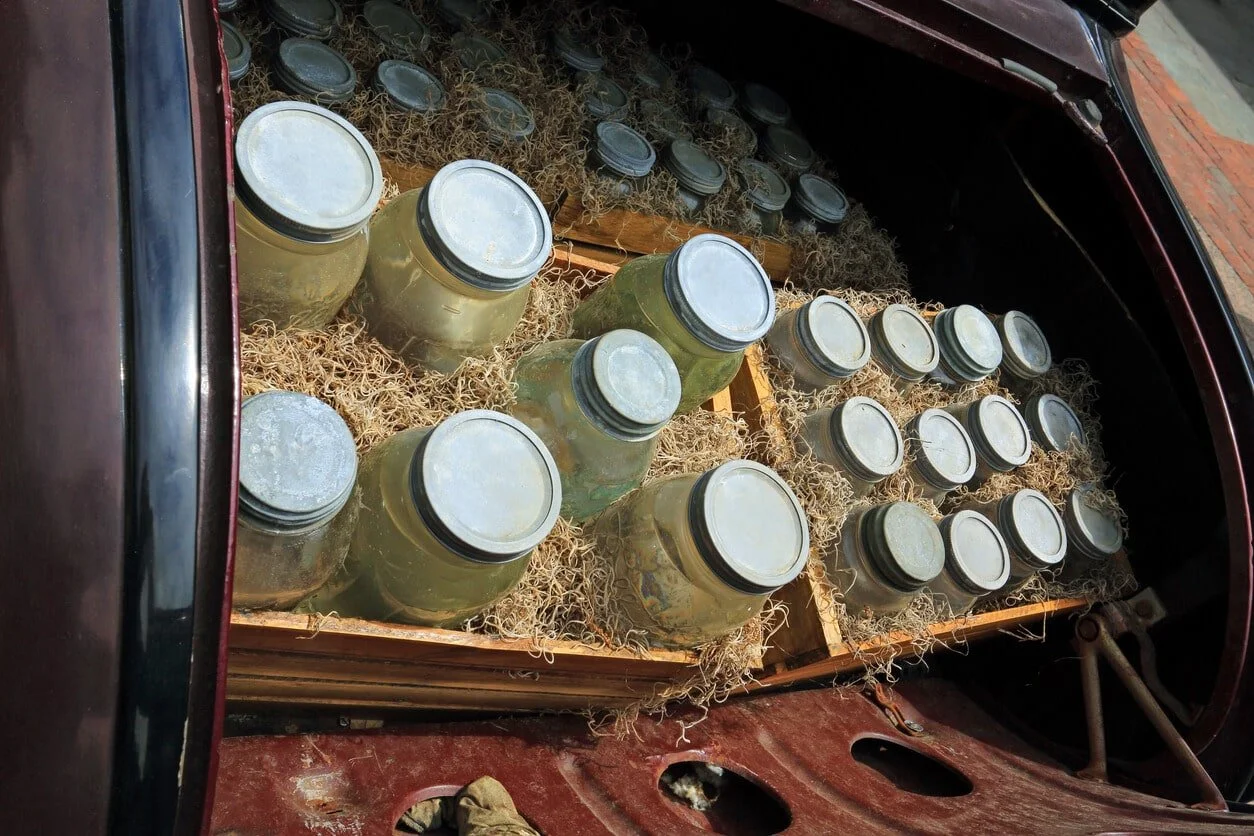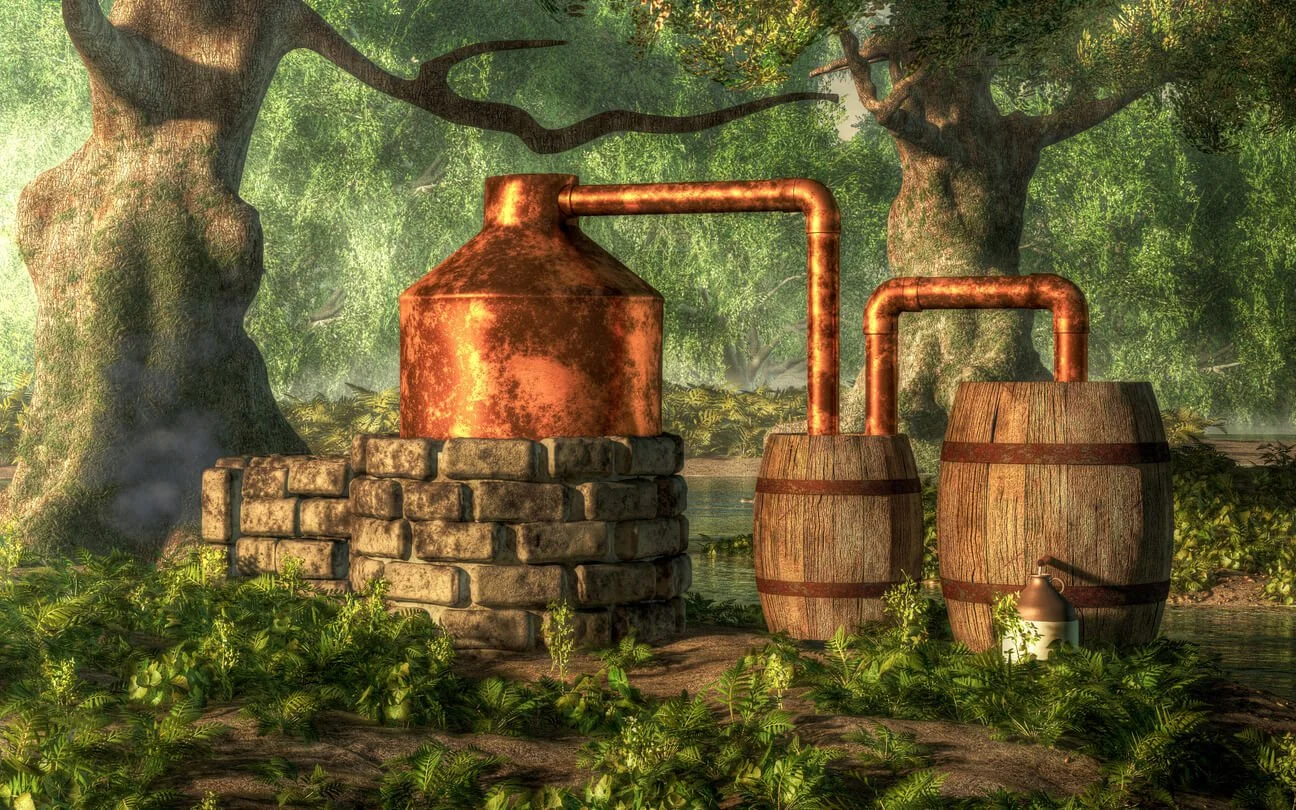The History Of Moonshine
Discover > Truly Texan > The History Of Moonshine
Moonshine has a very long and complicated history in the United States and the south. The law remains grey in most parts of the world, which doesn't stop most distillers from doing it legitimately or illegitimately.
What is Moonshine?
Moonshine is essentially unaged whiskey. although the term 'moonshine' is fitting for any liquor that is distilled illegally or without and license. Generally, it's distilled from fermented corn (how long does corn last?) or barley (how long does barley last?), but past distillers have hardly limited themselves to it. In fact, anything that could ferment was likely turned into alcohol. It usually has a very high 180 proof alcohol content (around 80%) and most traditionally is clear, hence one of its other names 'white lightning'. Another name moonshine has collected through its history are mountain dew, choop, hooch, homebrew, shiny, white liquor, white whiskey, and mash liquor.
History
Moonshine dates back much further than alcohol prohibition in the 1920s all the way back to early Europe in the 13th century. The word moonshine, contrary to popular belief is not a reference to making moonshine under the moonlight. Instead, it originates in the British Isles where the term references unlicensed alcohol in the seedier parts of the region. Moonshine became a popular term for alcohol distilled without a license, and illegally. Due to the fact that new tax bills were put in place that taxed the production and sale of alcohol.
Moonshine came to the US through Scottish and Irish settlers who fled to the US during the Irish revolution. The majority of the settlers migrated into the Pennsylvania region which at the time was an incredibly active region. It seems like more than a coincidence that they would arrive in the US just as alcohol prohibition began in 1920. Europe had instated tax laws on alcohol long before, making the Irish masters of the craft.
Prohibition In The United States
Informally known as the Volstead Act, alcohol prohibition was put into motion through the eighteenth amendment. It stated that the ban on the sale of alcohol would fix the issues caused by it at the time. Alcoholism, domestic violence, crime, and poverty. This backfired and naturally caused a huge uptick in organized crime. The time of the mafia, when mob bosses and gangsters like Al Capone ruled the illegal alcohol trade.
How Moonshine Was Made?
Moonshine can be made from anything that ferments. That anything was typically barley and corn or maize because it was cheap, easy to grow, and very widespread. The first thing that had to be made was the mash. Corn and barely was added into hot 165-degree water. The goal here was to extract all the starches from the corn that would eventually convert into simple sugars and alcohol through fermentation. After the corn simmered in the water, it's left to cool down around 10 degrees, mixing occasionally. After that, mixed in yeast ferments the liquid and keeps warm through copper tubing. Copper conducts heat well and unlike other metals, doesn't leak harmful chemicals into the liquor.
Eventually, a hot stone underneath the furnace boiled the alcohol. As pressure built in the still, the vapor traveled into the 'worm'. The worm was a hollow copper pipe that fed through another barrel called a 'worm box'. The worm box was typically filled with nearby creekwater, keeping the worm cold so it can condense the vapor into potent white lightning. Finally, a spout or tap that leads to the end of the worm and out of the barrel, filters the finished moonshine into a bucket ready to be sold.
The Foundation Of Nascar
Nascar is one of the most popular sports to ever grace American culture. It finds its roots right where bootlegging ended in the early 30s. Bootleggers would transport and deliver moonshine would drive moded stock cars that looked like every other car. Under the hood, however, they had souped out engines and shock suspension. This was essential to avoid suspicion by police at the time, and a swift getaway should they get made out. The idea that these skilled drivers quickly began racing each other as a favorite past time, is no surprise.
When the prohibition ended in 1933, the bootleggers who have made their living transporting illegal alcohol were out of business. While the work and pay may have ended, the racing certainly went on. In 1947 the National Association for Stock Car Auto Racing or NASCAR was born.
The most notable name that associates NASCAR drivers to bootlegging is Junior Johnson. He said, "It gave me so much advantage over other people that had to train and learn how to drive". According to NASCAR Johnson once said. "When I sat down in that seat the first race I ever ran, it was a backseat to what I'd already been through. I had done all them spinning deals sideways and stuff like that. It just made my job so much easier than anybody I had seen come along and go into it. Never, ever, did I see a guy who could take a car any deeper than I could and save it, as long as I raced."






